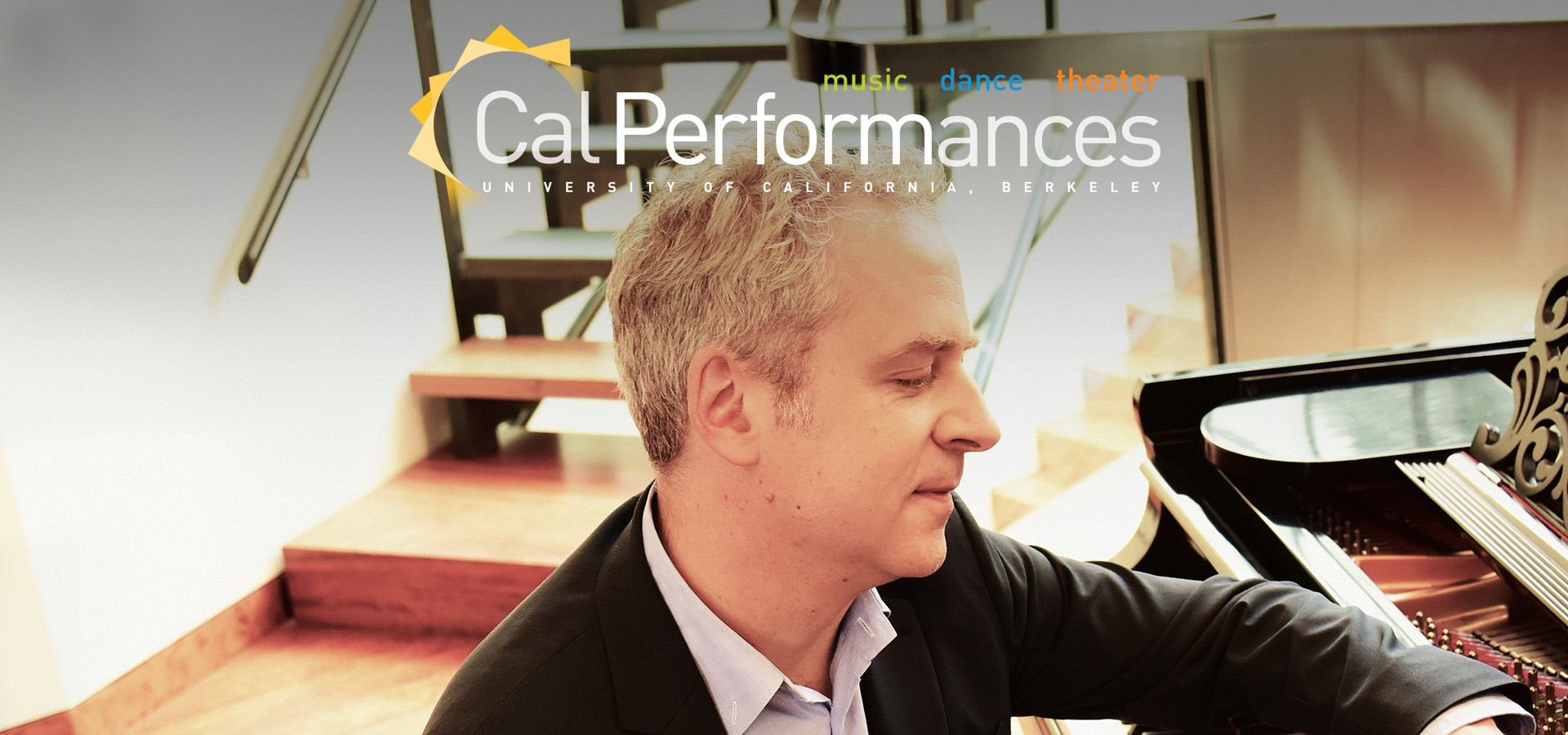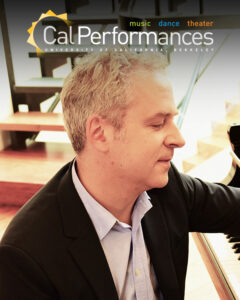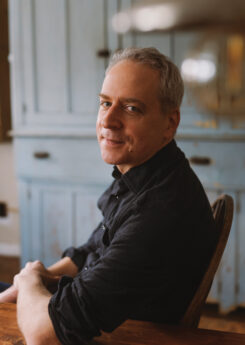Jeremy Denk, piano
Sunday, October 1, 2023, 3pm
Hertz Hall
Pianist Tom Borrow has withdrawn from today’s recital following a bicycle accident and on the advice of his doctor. We are extremely grateful to pianist Jeremy Denk for agreeing to perform the following program on extremely short notice.
From the Executive and Artistic Director
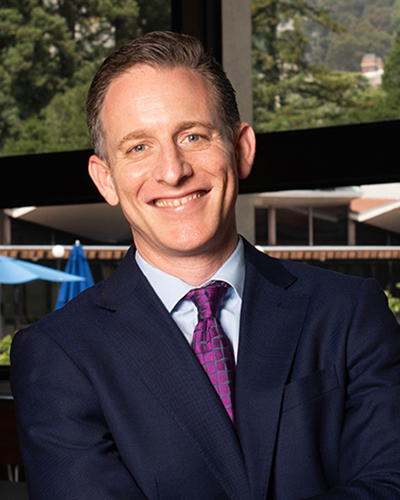
Welcome to the opening weeks of Cal Performances’ brilliant 2023–24 season! Beginning on October 1 with the Berkeley debut by the brilliant young Israeli pianist Tom Borrow, and continuing into May, when Icelandic pianist Víkingur Ólafsson will close the season with a performance of J.S. Bach’s timeless Goldberg Variations, you can look forward to a calendar packed with the very finest in live music, dance, and theater.
We start with a powerhouse lineup of remarkable musicians. Along with Tom Borrow, October features highly anticipated performances by artists like soprano Christine Goerke and pianist Craig Terry, mandolinist Avi Avital and accordionist Hanzhi Wang, the Los Angeles Master Chorale, and pianist Michelle Cann. We’ll also enjoy an exciting combination of hot jazz music and dazzling animation in the Triplets of Belleville Cine-Concert. And we’ll round out the schedule with presentations by two exciting guest speakers, the renowned artist and human rights activist Ai Weiwei (appearing with guests Peter Sellars and Orville Schell) and popular New York Times columnist and podcast host Ezra Klein.
As we continue through the season, you’ll find more than 80 carefully curated events designed to appeal to the eclectic interests and adventurous sensibilities of Bay Area audiences. This year’s schedule features nearly 30 companies, ensembles, and solo artists new to our program, offering a wide range of opportunities to discover unfamiliar performers and artworks. There’s plenty to enjoy, including six world premieres, six Cal Performances co-commissions, nearly one dozen local and regional premieres, and the West Coast premieres of Taylor Mac & Matt Ray’s Bark of Millions and Nathalie Joachim’s Ki moun ou ye (Who are you?).
Cal Performances continues to invest in ongoing relationships with established and acclaimed artistic partners, with upcoming presentations including a landmark collaboration between Germany’s Pina Bausch Foundation, Senegal’s École des Sables, and the UK’s Sadler’s Wells theater in the first-ever Bay Area performances of Bausch’s pioneering The Rite of Spring (1975), as well as the renewal of a multi-season residency by The Joffrey Ballet, which this year will present its first full-length narrative ballet, Anna Karenina, at Zellerbach Hall. And I’m especially pleased that in March 2024, the renowned pianist Mitsuko Uchida will join us as Artist in Residence for two special concerts as well as additional opportunities for the campus and wider Bay Area community to engage with her singular artistry.
A focus of the season will be our multi-dimensional Illuminations programming, which once again will connect the work of world-class artists to the intellectual life and scholarship at UC Berkeley via performances and public programs investigating a pressing theme—this season, “Individual & Community.” Concepts of “individual” and “community” have been at the forefront of public discourse in recent years, with some models increasing polarization and radicalization within our society. Questions have emerged as to how we can best nurture a sense of community and how the groups we associate with impact our own sense of self. Given our fast-evolving social landscape, how can we retain and celebrate the traits that make each of us unique, while still thriving in a world that demands cooperation and collaboration? With the performing arts serving as our guide and compass, our 2023–24 “Individual & Community” programming will explore the tensions that come into play when balancing the interests of the individual with those of the group.
Please make sure to check out our latest brochure and our website for complete information. We’re thrilled to share all the details with you, in print and online!
Jeremy Geffen
Executive and Artistic Director, Cal Performances
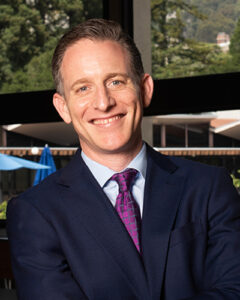 Welcome to the opening weeks of Cal Performances’ brilliant 2023–24 season! Beginning on October 1 with the Berkeley debut by the brilliant young Israeli pianist Tom Borrow, and continuing into May, when Icelandic pianist Víkingur Ólafsson will close the season with a performance of J.S. Bach’s timeless Goldberg Variations, you can look forward to a calendar packed with the very finest in live music, dance, and theater.
Welcome to the opening weeks of Cal Performances’ brilliant 2023–24 season! Beginning on October 1 with the Berkeley debut by the brilliant young Israeli pianist Tom Borrow, and continuing into May, when Icelandic pianist Víkingur Ólafsson will close the season with a performance of J.S. Bach’s timeless Goldberg Variations, you can look forward to a calendar packed with the very finest in live music, dance, and theater.
We start with a powerhouse lineup of remarkable musicians. Along with Tom Borrow, October features highly anticipated performances by artists like soprano Christine Goerke and pianist Craig Terry, mandolinist Avi Avital and accordionist Hanzhi Wang, the Los Angeles Master Chorale, and pianist Michelle Cann. We’ll also enjoy an exciting combination of hot jazz music and dazzling animation in the Triplets of Belleville Cine-Concert. And we’ll round out the schedule with presentations by two exciting guest speakers, the renowned artist and human rights activist Ai Weiwei (appearing with guests Peter Sellars and Orville Schell) and popular New York Times columnist and podcast host Ezra Klein.
As we continue through the season, you’ll find more than 80 carefully curated events designed to appeal to the eclectic interests and adventurous sensibilities of Bay Area audiences. This year’s schedule features nearly 30 companies, ensembles, and solo artists new to our program, offering a wide range of opportunities to discover unfamiliar performers and artworks. There’s plenty to enjoy, including six world premieres, six Cal Performances co-commissions, nearly one dozen local and regional premieres, and the West Coast premieres of Taylor Mac & Matt Ray’s Bark of Millions and Nathalie Joachim’s Ki moun ou ye (Who are you?).
Cal Performances continues to invest in ongoing relationships with established and acclaimed artistic partners, with upcoming presentations including a landmark collaboration between Germany’s Pina Bausch Foundation, Senegal’s École des Sables, and the UK’s Sadler’s Wells theater in the first-ever Bay Area performances of Bausch’s pioneering The Rite of Spring (1975), as well as the renewal of a multi-season residency by The Joffrey Ballet, which this year will present its first full-length narrative ballet, Anna Karenina, at Zellerbach Hall. And I’m especially pleased that in March 2024, the renowned pianist Mitsuko Uchida will join us as Artist in Residence for two special concerts as well as additional opportunities for the campus and wider Bay Area community to engage with her singular artistry.
A focus of the season will be our multi-dimensional Illuminations programming, which once again will connect the work of world-class artists to the intellectual life and scholarship at UC Berkeley via performances and public programs investigating a pressing theme—this season, “Individual & Community.” Concepts of “individual” and “community” have been at the forefront of public discourse in recent years, with some models increasing polarization and radicalization within our society. Questions have emerged as to how we can best nurture a sense of community and how the groups we associate with impact our own sense of self. Given our fast-evolving social landscape, how can we retain and celebrate the traits that make each of us unique, while still thriving in a world that demands cooperation and collaboration? With the performing arts serving as our guide and compass, our 2023–24 “Individual & Community” programming will explore the tensions that come into play when balancing the interests of the individual with those of the group.
Please make sure to check out our latest brochure and our website for complete information. We’re thrilled to share all the details with you, in print and online!
Jeremy Geffen
Executive and Artistic Director, Cal Performances
About the Performance
Wolfgang Amadeus Mozart
Piano Sonata No. 8 in A minor, K. 310
Mozart arrived in Paris, chaperoned by his mother, on March 23, 1778, hoping that the music lovers of the French capital would recognize his genius and reward him with an appropriate position. With the help of Baron Friedrich Grimm, whom he had met on his first trip to Paris as a Wunderkind of seven in 1763, he was introduced to several members of the aristocracy, though his treatment at their hands was something less than he had hoped for—his letters home often complain of being kept waiting in drafty anterooms and of having to perform on wretched harpsichords. In May, it appeared that his foray into Parisian cultural life might be rewarded. He reported to his father in Salzburg that he had been offered the post of organist at Versailles, a job with light duties, six months leave per year, and proximity to the royal family. His longing was not for the royal chapel, however, but for the opera house (and for a sweetheart, Aloysia Weber, whom he had met on the stop in Mannheim while journeying to Paris), and he refused the post. “After all, 2,000 livres is not such a big sum,” he rationalized in a letter to his furious father. Mozart’s stay in Paris grew sad. His mother fell ill in June, and she died the following month. He lingered in Paris, sorrowful and alone, until September 26th, when, without the position he sought or the commissions he hoped to receive, he returned to Salzburg.
Mozart tailored most of the pieces composed during his Parisian visit to the local taste, i.e., music possessed of much surface glitter and showy technique but with little emotional depth. There are two notable exceptions—the E minor Sonata for Violin and Piano (K. 304) and the A minor Piano Sonata (K. 310). His motivation for composing the Piano Sonata is unknown. He seems to have had no immediate prospect for its publication or public performance, and may have written it to play at private homes in his search for new pupils, or to present at the occasional musical gatherings of his Mannheim friends in Paris. Papa Leopold chastised him for “wasting” his time on such work when he should have been producing something that could earn some money. The sonata’s nature, “dramatic and full of unrelieved darkness,” according to Alfred Einstein’s classic 1945 study of the composer, suggests that Mozart composed the piece for himself rather than for any applause-seeking situation.
The work’s stormy opening movement revives the world of rich, proto-Romantic expression that Mozart first entered with the Little G minor Symphony of 1773 (K. 183), and which was to inform some of the greatest works of his maturity—Don Giovanni, G minor Symphony (K. 550), G minor Quintet, Requiem. The movement’s pervading sense of drama—dynamic contrasts, unrelenting rhythms, expressive harmonies—mark an important advance in Mozart’s musical language. The Andante opens in a bright major key, but soon shades into the minor, and in its middle section recalls the dramatic emotion of the preceding movement. The masterful alternation of major and minor, of light and shadow, of melancholy and hope, pervades the gossamer textures of the concluding Presto.
György Ligeti
Études, Book I
György Ligeti, one of music’s greatest modern masters, was born in 1923 to a Jewish family in the then Hungarian province of Transylvania. He studied composition at the conservatory in his boyhood home of Kolozsvár during the early years of World War II, when he also managed to take some private lessons in Budapest with the noted Hungarian pianist and composer Pál Kadosa. In 1944, however, Ligeti, with many other Jews, was pressed by the Nazis into forced labor in dangerous situations, including working in a munitions dump just in front of the Russian advance. After the war, Ligeti continued his studies at the Budapest Academy of Music. He pursued field research in Romanian folk music for a short time following his graduation in 1949, but returned to the Budapest Academy a year later, when he was appointed professor of harmony, counterpoint, and analysis. He fled Hungary in the wake of the Russian occupation of 1956, and settled in Vienna. He achieved his first wide recognition when his Apparitions was performed at the International Society for Contemporary Music Festival in Cologne in 1960. Ligeti continued to compose prolifically while teaching in Europe and America, and received the Bach Prize of the City of Hamburg, the German decoration Pour le mérit, and many other prestigious honors. He died in Vienna on June 12, 2006.
In writing of his three books of Études, Ligeti noted the many influences that flowed into them, from classical and vernacular to world music and geometry, but went on to say that “my Études are neither jazz nor Chopinesque-Debussian music, neither African nor Nancarrow, and certainly not mathematical constructs. I have written of influences and approaches, but what I actually compose is difficult to categorize: it is neither ‘avant-garde’ nor ‘traditional,’ neither tonal nor atonal. And in no way post-modern, as the ironic theatricalizing of the past is quite foreign to me. These are virtuosic piano pieces, études in the pianistic and compositional sense. They proceed from a very simple core idea, and lead from simplicity to great complexity: they behave like growing organisms.”
Ligeti explained that the first and last of the six études comprising Book I of 1985 shared a creative impulse: “In the Étude No. 6, ‘Automne à Varsovie’ [‘Autumn in Warsaw’] a single pianist, with only two hands, seems to play simultaneously at two, three, sometimes four different speeds. The piece is a sort of a fugue with diminutions and augmentations from 3 to 4 to 5 to 7. My knowledge of the super-fast ‘elementary pulse’ in African musical thinking made the polyrhythm (and ‘polytempo’) in this étude possible. But I am using only an idea from African notions of movement, not the music itself. In Africa, cycles or periods of constantly equal length are supported by a regular beat (which is usually danced, not played). The individual beats can be divided into two, three, sometimes even four or five ‘elementary units’ or fast pulses. I employ neither the cyclic form nor the beats, but use rather the elementary pulse as an underlying grid-work.
“I use the same principle in Étude No. 1, ‘Désordre’ [‘Disorder’], for accent shifting, which allows illusory pattern deformations to emerge: the pianist plays a steady rhythm, but the irregular distribution of accents leads to seemingly chaotic configurations.”
The Étude No. 2, “Cordes à vide” (“Open Strings”), is based on a succession of interlocking perfect fifths (i.e., the interval created by the first two pitches of “Twinkle, Twinkle, Little Star”), played as if from a distance at first but becoming more intense and complex before fading toward silence at the end. The effect is somewhat Impressionistic and almost programmatic, perhaps Ligeti’s late-20th-century analogue to Debussy’s La cathédrale engloutie (The Sunken Cathedral), which was inspired by an ancient Breton legend of a cathedral in the submerged city of Ys that rises briefly above the waves on clear mornings, bells tolling and priests chanting.
In the Étude No. 3, “Touches bloquées” (“Blocked Keys”), both hands play on the same keys, though one hand silently depresses and holds down some keys to keep the dampers away from the strings while the other hand plays fast, chromatic patterns around them, creating a gapped scale effect through which the “blocked keys” strings are sympathetically activated to produce tiny halos of sound. The brief center section comprises clipped phrases built from occasionally fractured octaves.
The Étude No. 4, “Fanfares,” with its incessant scalar ostinato, short-phrased melody, irregular beat pattern (3+2+3), and modal harmonies, is rooted in the subtilized gestures that Bartók extracted from Hungarian folk music.
Long rising and falling chromatic threads of music characterize the Etude No. 5, “Arc-en-ciel” (“Rainbow”), which Ligeti said was influenced by jazz pianism, specifically “the poetry of Thelonious Monk and Bill Evans. ‘Arc-en-ciel’ is almost a jazz piece.”
Johann Sebastian Bach
Keyboard Partita No. 6 in E minor, BWV 830
With the condescending pronouncement, “Since the best man could not be obtained, mediocre ones would have to be accepted,” City Councilor Platz announced the appointment of Johann Sebastian Bach in 1723 as Cantor for Leipzig’s churches. Platz’s “best man” was Georg Philipp Telemann, then the most highly regarded composer in all Germany, and the local disappointment at not being able to pry him away from his post as Hamburg’s music director was only one of the many difficulties that Bach faced during his first years on the job in Leipzig. Bach’s new duties centered on directing the music for the Sunday worship at the town’s four churches, principally St. Thomas, where the service usually stretched to four hours and required copious amounts of music, a sizeable portion of which the new Cantor was required to compose. Bach was responsible to the city’s ecclesiastical Consistory in fulfilling these duties, which he had to balance with his teaching at the church’s school, run by the town council. He was also charged with providing some of the music for Leipzig University’s chapel, administered by that institution’s board of governors. His dealings with none of these bodies was eased by his volatile, sometimes even belligerent temper, and his relations with his superiors were almost constantly strained. The most serious of these animosities erupted in a petition to the land’s highest authority, Augustus “the Strong,” Elector of Saxony, asking him to adjudicate a dispute over his assignments and pay with the university authorities, who were much concerned with Bach’s paucity of formal education. Bach lost.
Much of Bach’s early activity in Leipzig was carried out under the shadow of the memory of his predecessor, Johann Kuhnau, a respected musician and scholar who had published masterly translations of Greek and Hebrew, practiced as a lawyer in the city, and won wide fame for his keyboard music. In 1726, probably the earliest date allowed by the enormous demands of his official position for new sacred vocal music, Bach began a series of keyboard suites that were apparently intended to compete with those of Kuhnau. In addition to helping establish his reputation in Leipzig, these pieces would also provide useful teaching material for the private students he was beginning to draw from among the university’s scholars, who were less hampered by bureaucratic exigencies than their superiors in recognizing Bach’s genius. (Several of his secular cantatas were written for commissions from the university students.) The Partita No. 1 in B-flat major (BWV 825) issued in that year was the first of his compositions to be published, with the exception of two cantatas that appeared during his short tenure in Mühlhausen many years before (1707–1708). Bach funded the venture himself and even engraved the plates (to save money) with the help of his teenage son Carl Philip Emanuel, who was then learning that exacting craft. (Copies could be had directly from the composer, cash in advance.) Bach published an additional partita every year or so until 1731, when he gathered together the six works and issued them collectively in a volume entitled Clavier-Übung (Keyboard Practice), a term he borrowed from the name of Kuhnau’s keyboard suites published in 1689 and 1692. The partitas of what became Part I of the Clavier-Übung were well received; Johann Nikolaus Forkel, in the first full biography of Bach (1802), reported that “the works made in their time a great noise in the musical world. Such excellent compositions for harpsichord had not been seen or heard before, so brilliant, agreeable, expressive, and original are they. Anyone who could play them well could make his fortune in the world thereby, and even in our times, a young artist could gain acknowledgment by doing so.” Bach continued his series of Clavier-Übung with three further volumes of vastly different nature: Part II (1735) contains the Italian Concerto, the ultimate keyboard realization of that quintessential Baroque orchestral form, and an Ouverture (Suite) in the French Manner; Part III (1739), for organ, the Catechism Chorale Preludes, several short canonic pieces and the St. Anne Prelude and Fugue; and Part IV (1742), the incomparable Goldberg Variations.
The term “partita” was originally applied to pieces in variations form in Italy during the 16th century, and the word survived in that context into Bach’s time. The keyboard partitas of the Clavier-Übung, however, are not variations but suites of dances, a form that in France occasionally bore the title of Partie, meaning either a movement in a larger work or a musical piece for entertainment. The French term was taken over into German practice in the late 17th century as Parthie to indicate an instrumental suite, and Bach’s “Partita” seems to have been a corruption of this usage. (He had earlier used the title for three of his works for unaccompanied violin.) Bach referred to these pieces as galanteries or “entertainment pieces,” and loosened the usual German succession of dances (Allemande, Courante, Sarabande, Gigue) to include such alternate movements as Rondeau, Capriccio, Burlesa, Aria and Gavotte. Each of the six partitas opens with a movement of different character: Praeludium, Sinfonia, Fantasia, Ouverture, Praeambulum and Toccata. The dances that follow these preludial movements differ from one work to the next, but satisfy the demand for stylistic variety and formal balance. Charles Sanford Terry wrote, “Bach’s keyboard suites contain not far short of 200 movements. They exhibit extraordinary fertility of invention, vivid imaginative power, and complete technical mastery of the forms they employ.”
The Partita No. 6 in E minor is one of Bach’s most introspective keyboard compositions. It opens with an unusual toccata, a form that typically admits only free, quasi-improvisatory figural work (as is heard in the first and last sections), but here expanded to incorporate a vast fugue as the central argument of the movement. The following Allemande is deeply expressive and richly decorated. The Corrente is built around a precisely controlled chain of nervous rhythmic syncopations. The brief Air is a moto perpetuo piece rooted in largely scalar figurations. Next comes a sarabande whose elaborate melodic filigrees temper its essentially tragic nature. Two fast movements close the work: a gavotte of vigorous rhythmic energy and a gigue in imitative style.
Ludwig van Beethoven
Sonata in E major, Op. 109
Beethoven’s painful five-year court battle to secure custody of his nephew Karl from his brother Caspar’s dissolute widow (whom the composer disparaged as the “Queen of the Night”) finally came to an end early in 1820. He “won,” but lost the boy’s affection (Karl, half crazed from his uncle’s overbearing attention, tried, unsuccessfully, to kill himself); the case also publicly exploded the composer’s pretension that he was of noble blood. Beethoven was further troubled by deteriorating health and a certain financial distress (he needed a loan from his brother Johann, a prosperous apothecary in Vienna, to tide him over that difficult time), so it is not surprising that he composed little during the period. With the resolution of his custody suit, however, he returned to creative work with a set of three piano sonatas, and began anew the titanic struggle to embody his transcendent thoughts in musical tones. In no apparent hurry to dispel the rumors in gossipy Vienna that he was “written out,” he produced just one work in 1820, the Sonata in E major, Op. 109. The A-flat Sonata was dated on Christmas Day, 1821, and his last piano sonata, the Op. 111 in C minor, appeared just three weeks later. It was in his three last sonatas that Beethoven realized the essential technique—the complete fusion of sonata, variation, and fugue—that fueled the soaring masterpieces of his final period.
Beethoven composed his Op. 109 between May and September 1820 in the Austrian village of Mödling, south of Vienna, where he had rusticated for the two previous summers (though he had to find new lodgings that year since his landlord of 1819 refused to rent to the stone-deaf composer again because of his “noisy disturbances”). Those country residencies were times of spiritual and creative retreat for Beethoven, when, according to his amanuensis and biographer, Anton Schindler, he was “rapt away from the world.” Sketches for the sonata appear among those for the Credo and the Benedictus of the Missa Solemnis, an appropriate balance of the personal and public manifestations of the transcendent visions he was seeking to embody within the creations of his last years. The sonata was published by the Berlin house of Schlesinger in November 1821 with a dedication to Maximiliane Brentano, the daughter of Franz Brentano (a Frankfurt merchant who acted as the composer’s agent with the publisher Simrock) and Antonie Brentano (whom Maynard Solomon has convincingly identified as the “Immortal Beloved”). “A dedication!!!,” Beethoven wrote to Maximiliane on December 6th. “Well, this is not one of those dedications that are used and abused by thousands of people. It is the spirit that unites the noble and finer people of this earth and which time can never destroy. It is this spirit that now speaks to you and calls you to mind, and likewise your beloved parents—your most excellent and gifted mother, your father imbued with so many truly good and noble qualities and ever mindful of the welfare of his children…. The memory of a noble family can never fade in my heart. May you sometimes think of me with a feeling of kindness. My most heartfelt wishes. May heaven bless your life and the lives of all of you forever.”
The dominant emotional state of the outer movements of the E major Sonata is optimism and joy (perhaps a reflection of Beethoven’s gratitude over the court decision regarding Karl), which is thrown into relief by the stormy central Prestissimo. The opening movement is the epitome of Beethoven’s distillation of the sonata principle in his late works: the two themes (the first—fast, flowing, diatonic, arpeggiated; the second—slow, ruminative, chromatic, chordal) are given in bare, economical juxtaposition, without introduction or transition. The development section is a seamless, superbly directed elaboration of the main theme that reaches its peak at the moment the recapitulation begins. The second subject returns before the movement ends with a luminous coda built on the principal theme. The fiery Prestissimo, which serves as the work’s scherzo and its emotional foil, is also in sonata form, though, unlike the opening movement, its themes are little contrasted with each other. The finale, twice the length of the first two movements combined, is an expansive set of six variations founded upon the hymnal two-part theme presented at the outset. An ethereal restatement of the theme, virtually a benediction to the entire work, brings the sonata to a sublime close.
—© 2023 Dr. Richard E. Rodda


